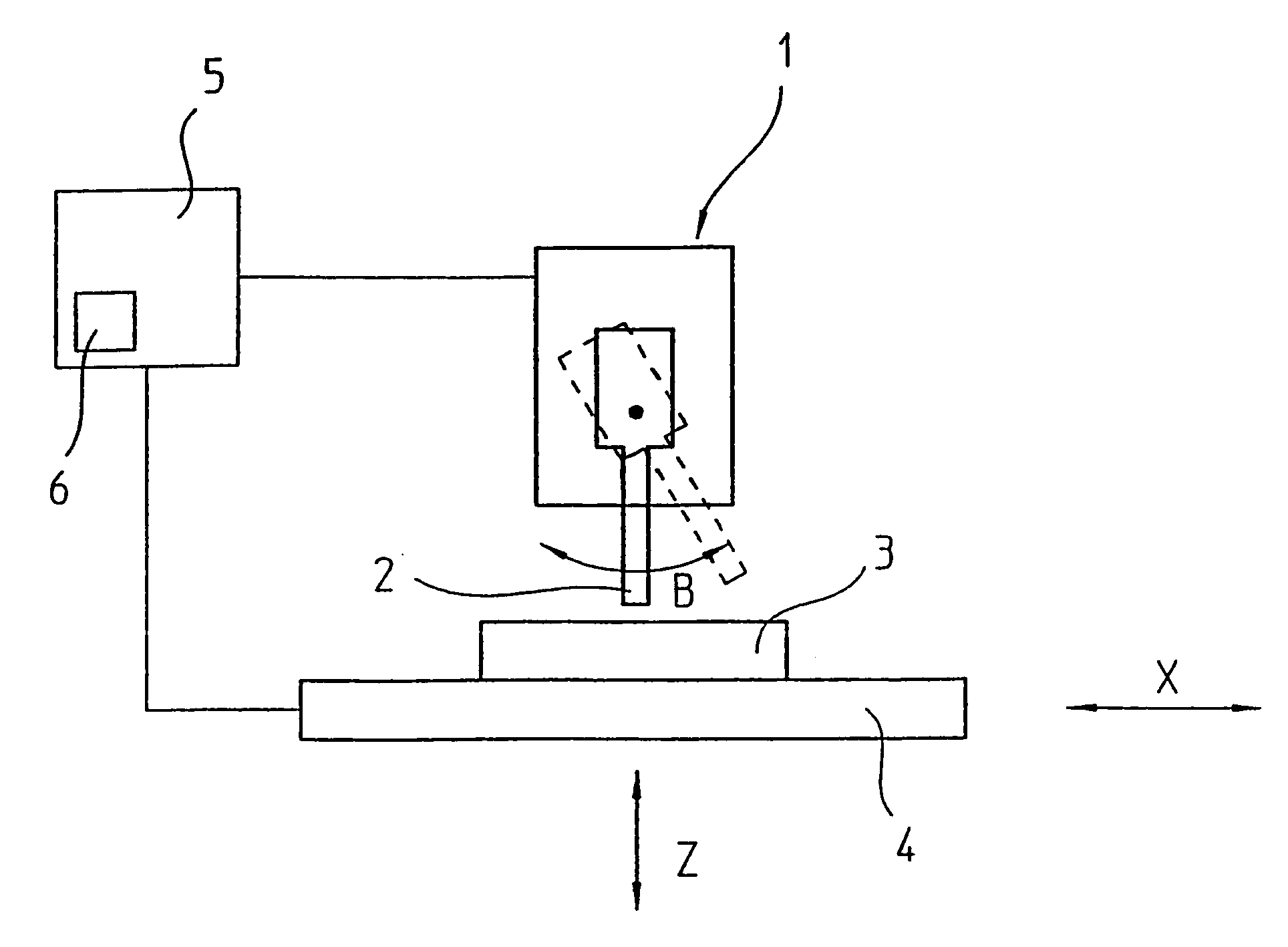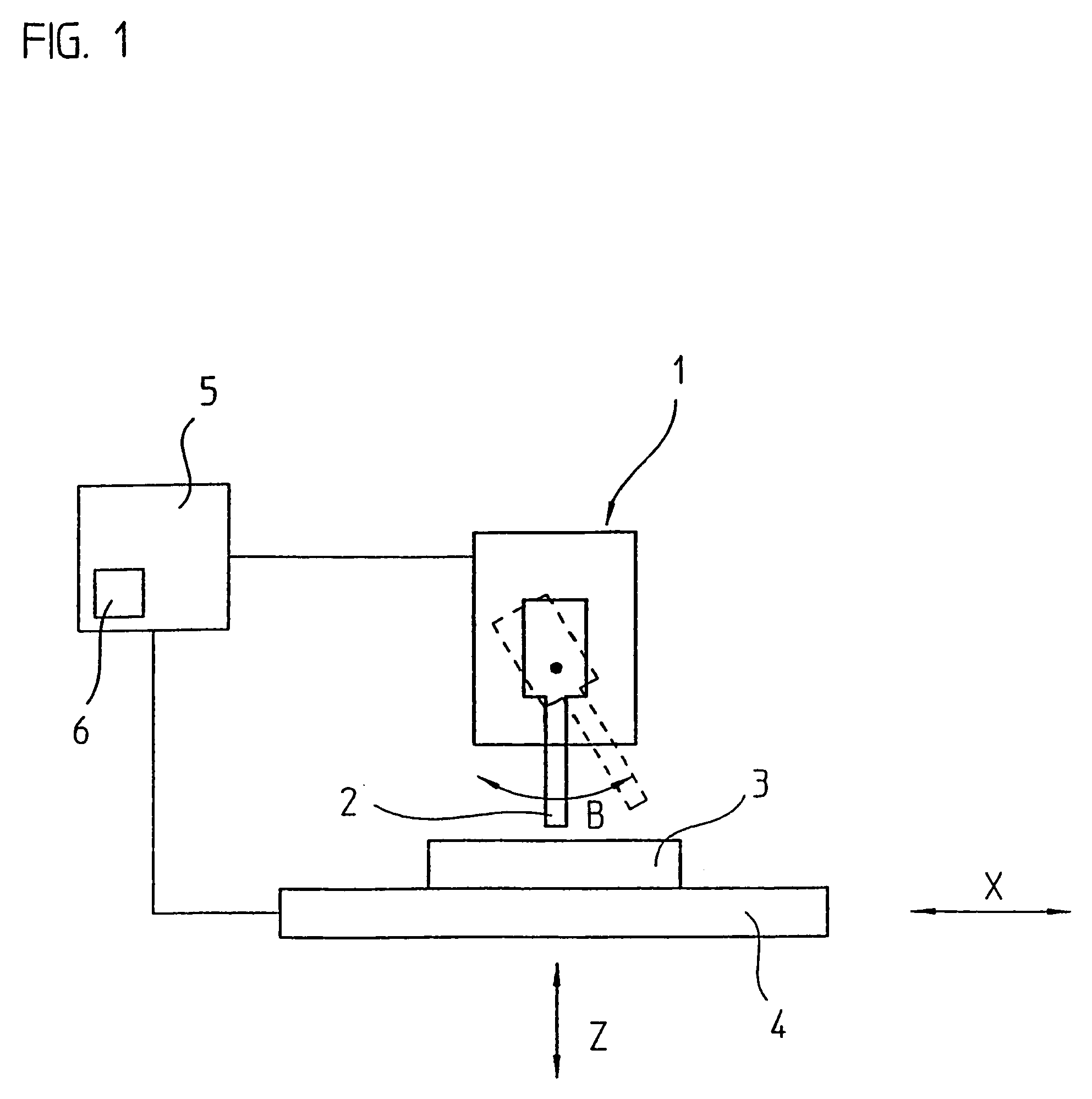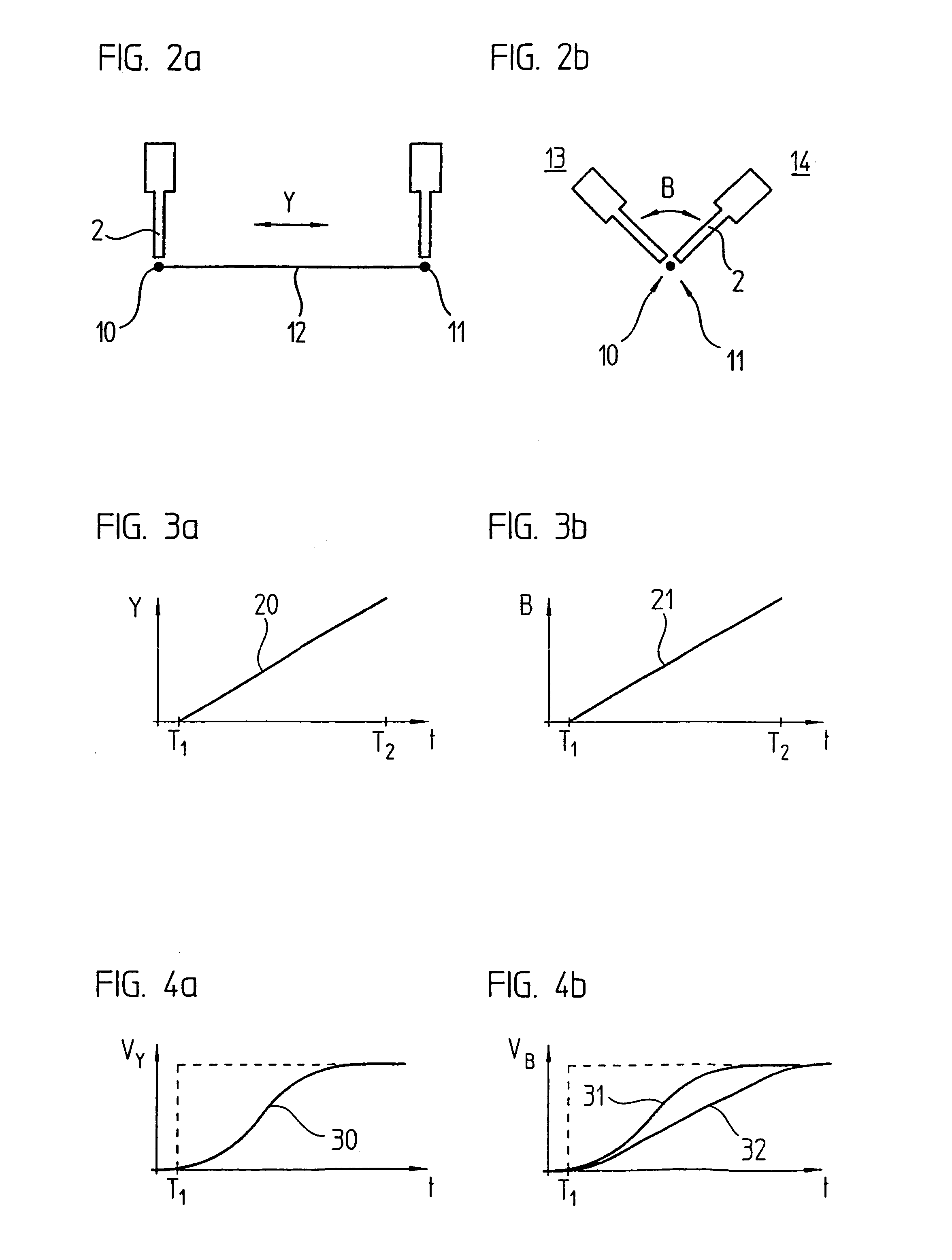Method for continuous-path control
a technology of path control and path control, applied in the direction of electric programme control, program control, instruments, etc., can solve the problems of poor dynamics and impairment of achieve the effects of improving surface quality, improving machining efficiency, and increasing the surface quality of the machined workpi
- Summary
- Abstract
- Description
- Claims
- Application Information
AI Technical Summary
Benefits of technology
Problems solved by technology
Method used
Image
Examples
Embodiment Construction
[0014]FIG. 1 shows a machine tool 1 having a tool 2. A workpiece 3 is mounted on a machining table 4. Workpiece 3 and tool 2 are movable relative to each other in several axes. Thus, linear axes in the X-direction and Z-direction are shown in the drawing; a third linear axis in the Y-direction is normal to the drawing plane. In a 5-axis milling machine, there are also two angle axes, of which the B-axis is shown in FIG. 1. Tool 2 is able to swivel about the direction of the Y-axis. A second angle axis A is obtained when machining table 4 is able to be tilted about the X-axis. Axes X, Y, Z, A, B are controlled by a numerical control 5 which, for example, is able to execute a parts program or receive and carry out individual commands by the machine-tool operator.
[0015]FIG. 1 illustrates that a movement of tool 2 about angle axis B causes the tip of tool 2 to shift with respect to workpiece 3. To simplify the programming of the machining of a workpiece in a plurality of axes X, Y, Z, A...
PUM
 Login to View More
Login to View More Abstract
Description
Claims
Application Information
 Login to View More
Login to View More - R&D
- Intellectual Property
- Life Sciences
- Materials
- Tech Scout
- Unparalleled Data Quality
- Higher Quality Content
- 60% Fewer Hallucinations
Browse by: Latest US Patents, China's latest patents, Technical Efficacy Thesaurus, Application Domain, Technology Topic, Popular Technical Reports.
© 2025 PatSnap. All rights reserved.Legal|Privacy policy|Modern Slavery Act Transparency Statement|Sitemap|About US| Contact US: help@patsnap.com



